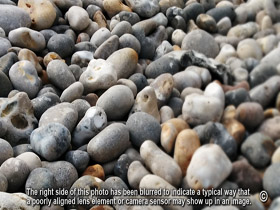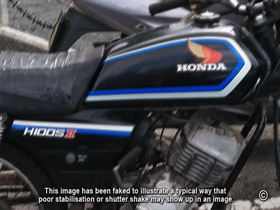 |
ARTICLE MENU
|
M4/3 System
(16th December 2016)
Practical Checks for
Lenses + Camera
for potential problems
when using long ‘pro’ lenses ‘in the field’.
(Test procedures devised by and article © Adrian Harris)
Frequently when photographers acquire
their first ‘pro’ ultra-long telephoto zoom lens, their initial results
can often be disappointing, and with some the immediate next response is
to ‘rubbish’ the lens and manufacturer.
As sensors have got smaller and lenses have got much longer and
faster, critical alignment and stabilisation demands are pushing design
and manufacturing to new extremes.
Slow lenses which operate at f5.6 or above are far less critical of any
optical or sensor misalignment than fast ‘Pro’ lenses which often
operate at f2.8 or below. Which is why when a camera user has been happy
with a camera for a while and then ‘upgrades’ to a fast lens, a nasty
little problem may well show its head for the first time. But is it the
lens or the camera at fault!
Of course sometimes it may well be a poor lens that has sneaked through
the system, but often there are other factors that come into play.
Speaking from personal experience, disappointment turns to dismay when
after returning the suspect item for checking it is sent back saying
there is nothing wrong with it. Which if true means that either the
camera is the problem – possibly faulty in some way, a bad match for
that particular lens, or just not set up correctly, - or the
photographers technique needs to be looked at.
But how does a normal person who has no test equipment at all go about
checking their equipment in a simple, repeatable, and easily accessible
way? … which has been the dilemma facing me for some time as I have
tried my utmost to get the results I would expect from my ‘flagship’ M43
equipment.
TESTING TESTING:
Photographing flat charts on a wall with a tripod mounted camera is not
a great way to test equipment which will be used possibly handheld in a
three dimensional real world environment. The following series of three tests were
devised to try and eliminate factors which could possibly be degrading
images when using ultra-long zoom lenses in practical situations and I
would advise for the checks to be carried out in the following sequence:
1.
Off-Centre Lens & Sensor Alignment Testing.
(tests for lens optics and camera sensor alignment faults).
2.
Lens and Stabilisation - Sharpness Testing.
(tests for lens sharpness and image stabilisation issues).
3.
Front Focus & Back Focus Testing.
(tests for focus alignment setup accuracy between the camera and lens.)
Important Note:
Regarding ‘depth of focus’, the term ‘fast lens’ is relative. For
example a 50mm f2.8 is not a particularly fast lens, but a 600mm f4
certainly is. (If you would like to know more about Depth of Focus,
please Google ‘Optical Circle of Confusion’.)
|
EXAMPLE FAULTS
|
 |
| 1.
Misaligned Optics or Sensor. |
|
|
|
 |
| 1.
Lens Optics or Stabilisation
Issue. |
|
|
|
 |
|
|
|
| Article ©
Adrian Harris |
|
 |




